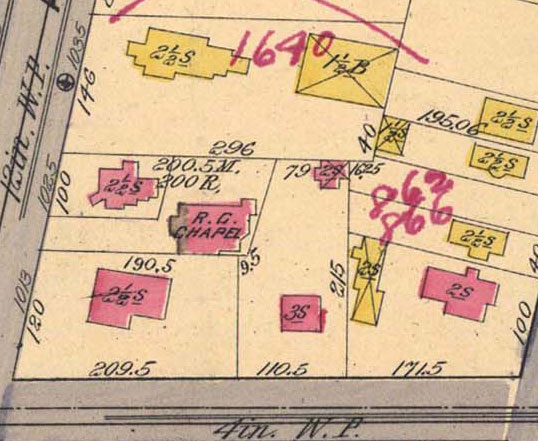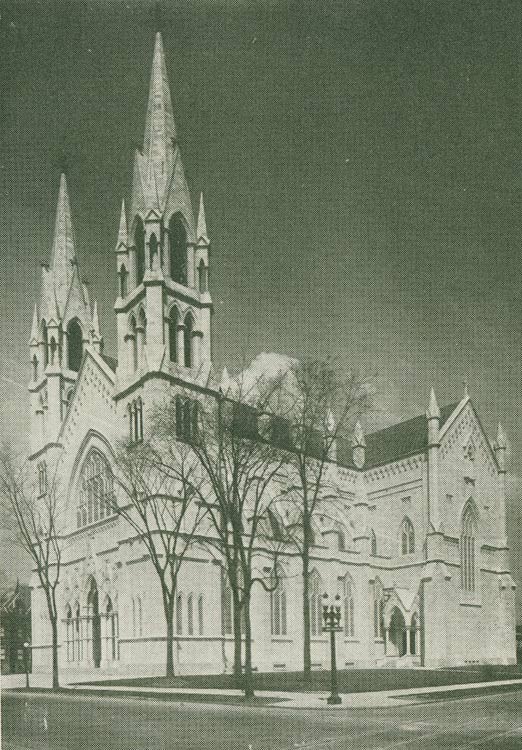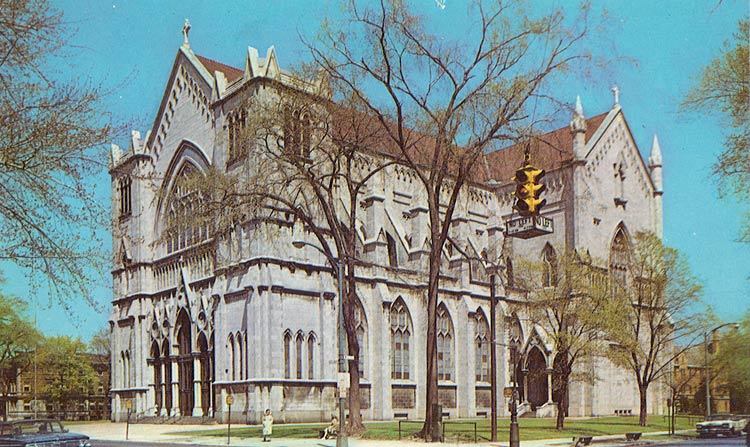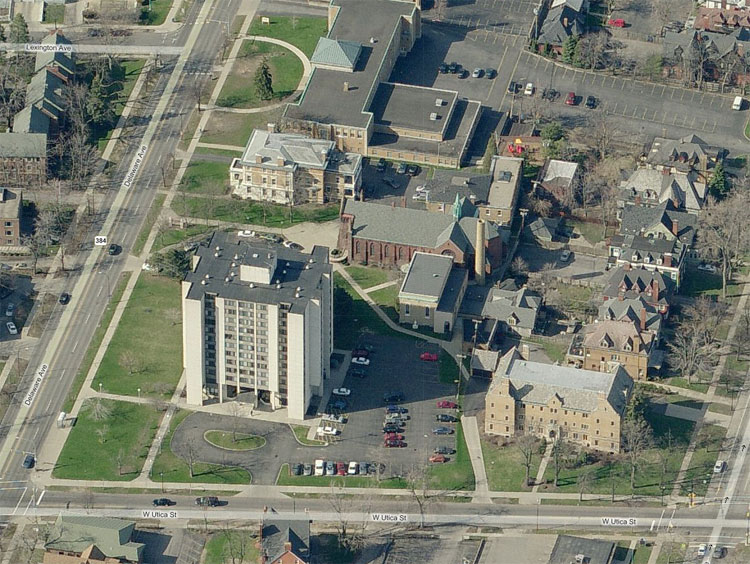St. Joseph's New Cathedral: Northeast Corner of Delaware & Utica

In 1885, The episcopal residence of Bishop Ryan was on Frankliln Street near St. Joseph's Cathedral on Franklin Street. The neighborhood around the northeast corner of Delaware and West Utica at that time was built up with large residential plots belonging to William C. Newman (merchant in flour and cement, at #1013, the corner location); Edmund S. Ralph (of S.O.Barnum's, at #1025, next door); Cicero Hamlin and wife Susan (American Glucose, at #1035 north of Ralph); and the Knox house (of S.H. Knox Co, at 1045). The plot abutting the Newman and Ralph properties on West Utica belonged to the Burdict family.
In 1888-87, twenty years of transformation began when the diocese purchased the property owned by Edmund Ralph at 1025 Delaware. In the next year, a large brick and brownstone residence was built for the Bishop to remove his home from the increasingly developed downtown area. At the rear of the plot was constructed a chapel, Blessed Sacrament, for his use. Dedicated in May, 1889, the 288-seat structure proved popular and became a parish church in 1900. It was later enlarged to hold 600 people.
In 1902, the corner lot, owned by William Newman at #1013, was purchased by the diocese. Bishop Colton had determined that a new St. Joseph's Cathedral should be constructed at the corner of Delaware and Utica.
By 1906, plans for a cathedral for the site had been obtained from an Italian architect, Aristides Leonori of Rome, for a cathedral well suited for the climate of Italy. More land was needed to accomodate such a structure and so in 1908, the Hamlin home at #1035 was purchased. Around that time then the Burdict property was also purchased, and in 1911 the 4,000 ton Blessed Sacrament church was moved back 200 feet to allow more room for the cathedral.

1894 Buffalo City Atlas view of the corner of Delaware and Utica.
The new St. Joseph's Cathedral was constructed between 1912 and 1915. As the image below shows, it soared above the residential neighborhood, its twin towers 260 feet high.

St. Joseph's New Cathedral rising above the Delaware/Utica neighborhood. Image source: 1914 Buffalo Express yearbook
In 1922, the final property was purchased by the diocese, that of Grace M. Knox at #1045 (today numbered 1035). The episcopal home built in 1888 was demolished and the Bishop moved into the Knox mansion.

Interior of the cathedral, c. 1932. Image source: private collection
By 1924, major repairs began on the cathedral with the rebuilding of both the north and south transcepts. Its design had proved unsuited to Buffalo's winters.

c. 1932 photo of the cathedral with spires. Image source: private collection

c. 1960 postcard of the cathedral with spires removed. Image source: private collection
A massive 45-bell carillon installed in the twin towers endangered the integrity of the towers with their percussion and had to be removed. Then, in 1927, the towers themselves were removed. Repairs were made on a continuing basis with no lasting improvement.
The exterior marble separated from the brick to which it was adhered; chunks of plaster fell from the ceilings, necessitating the closing off of some rows of pews. In the 1970's, Bishop Head determined that appropriate repairs would be cost prohibitive and there was no guarantee that, when finished, the rebuilt cathedral would be free of leaks. St. Joseph's New Cathedral was demolished in 1976. The bishop's seat was returned to "old" St. Joseph on Franklin Street.

Current photo of the same location, Timon Towers apartments on the site.
Timon Towers, a senior citizen apartment complex, was built in 1978. Blessed Sacrament Church remains active and the Knox mansion is used as parish offices for the church.

Bing bird's eye view of the northeast corner Delaware and Utica in 2007.